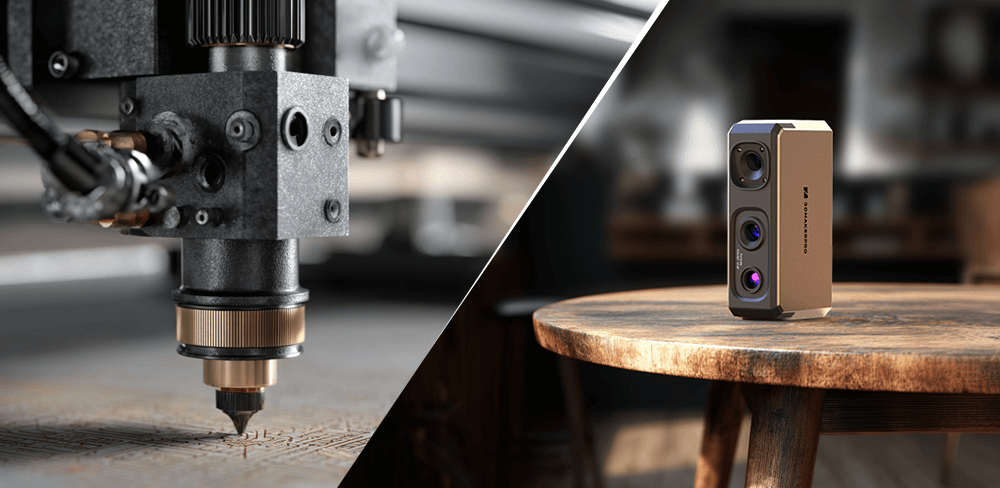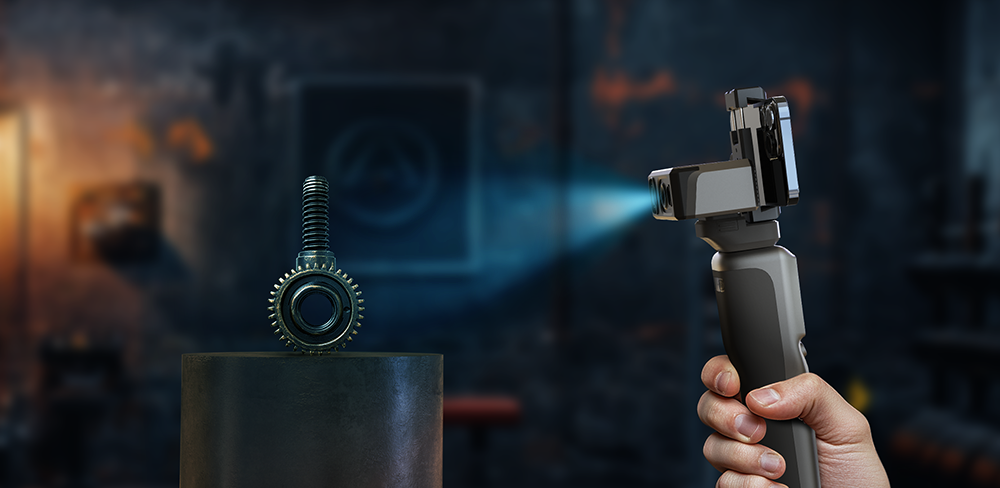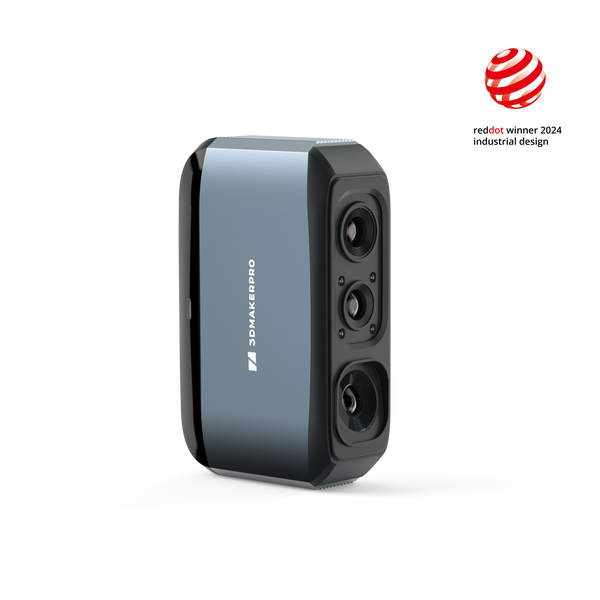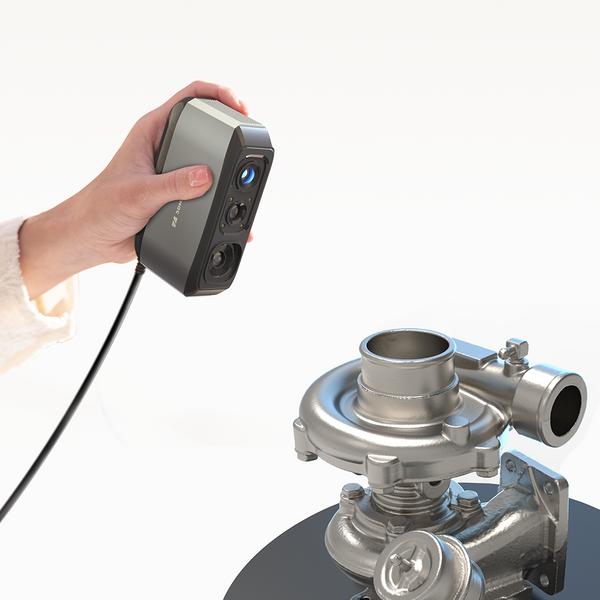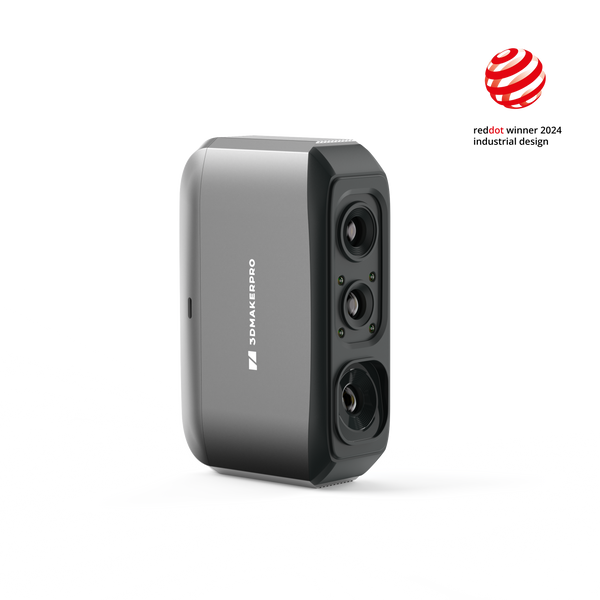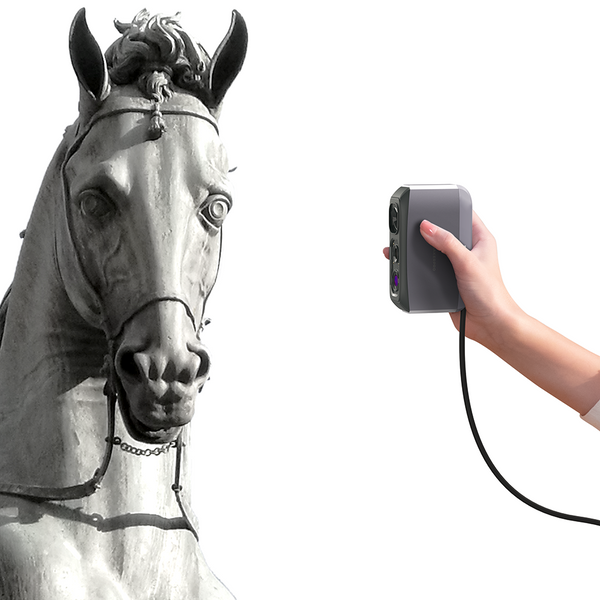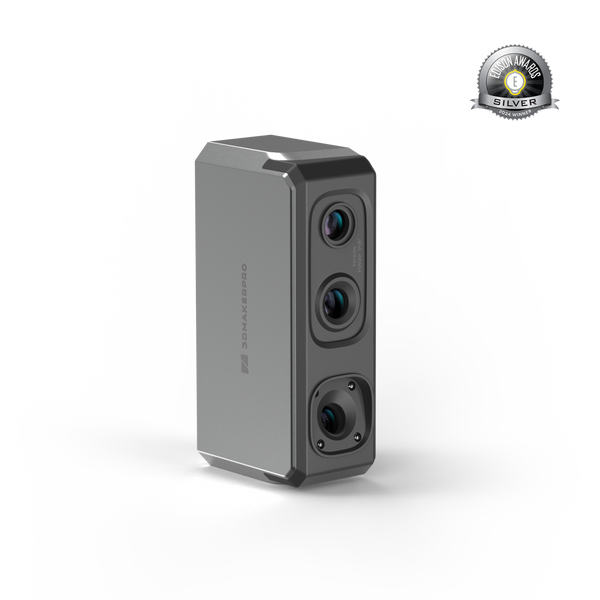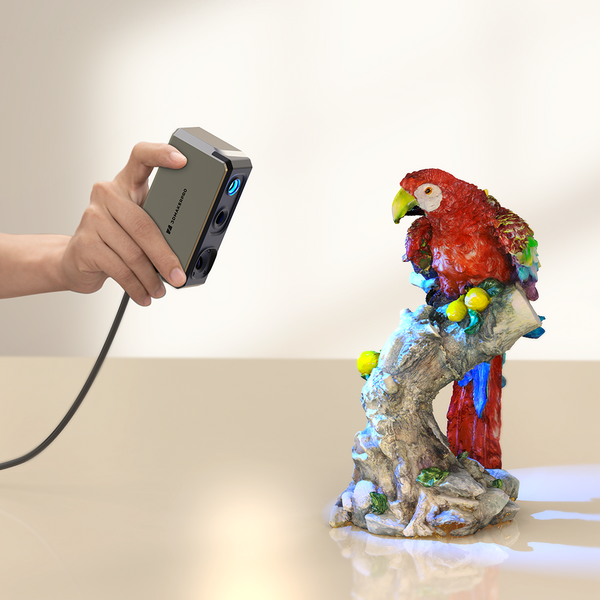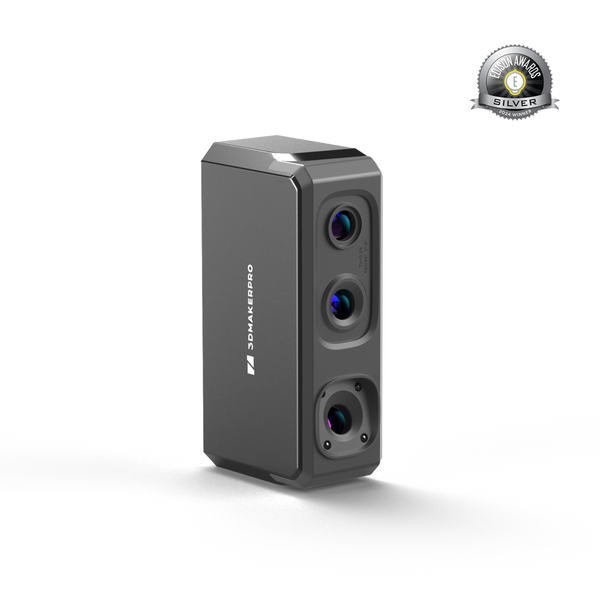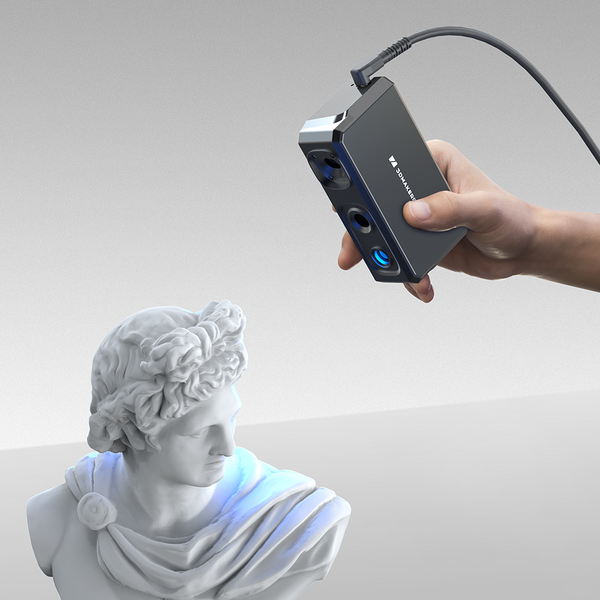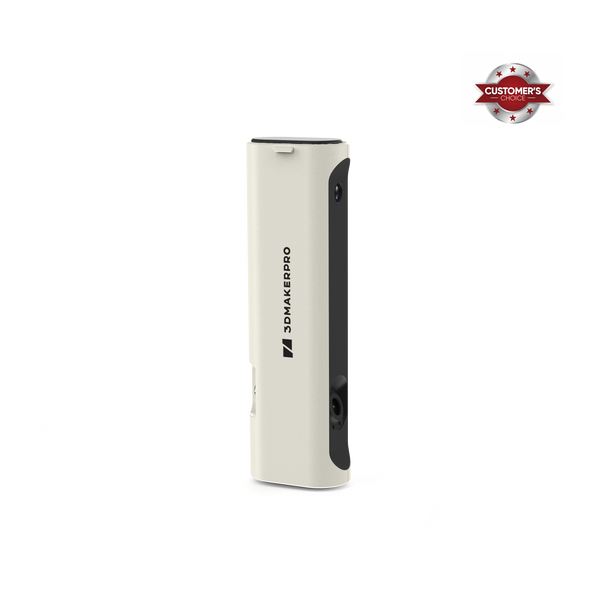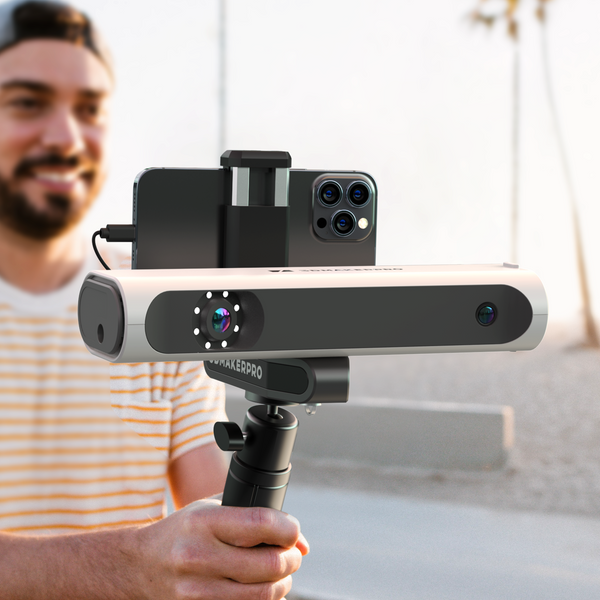3D printing has transformed the way we create and manufacture objects, enabling individuals to turn their ideas into tangible products with remarkable ease. The integration of 3D scanners has further enhanced this journey, making it more accessible and exciting. Whether you’re an artist, hobbyist, or DIY enthusiast, selecting the best 3D scanner is essential for improving your modeling experience. In this guide, we’ll explore how to choose the best 3D scanner for your home projects, focusing specifically on structured light scanners.
What Is A Structured Light 3D Scanner?
A structured-light 3D scanner is a device used to capture the three-dimensional shape of an object by projecting light patterns, such as grids or stripes, onto its surface. The deformation of these patterns is recorded by cameras and processed using specialized algorithms to generate a detailed 3D model.
Structured-light 3D scanning is widely employed in fields such as industrial design, quality control, cultural heritage preservation, augmented reality gaming, and medical imaging. Compared to laser-based 3D scanning, structured-light scanners use non-coherent light sources, such as LEDs or projectors, which enable faster data acquisition and eliminate potential safety concerns associated with lasers. However, the accuracy of structured-light scanning can be influenced by external factors, including ambient lighting conditions and the reflective properties of the scanned object. -- From Wikipedia
3D Scanner Effect Comparison
Moose Scanner VS. Moose Lite Scanner
The Moose scanner employs a blue LED light source and offers 24-bit color textures, enabling it to produce color images with high color reproduction. In contrast, the Moose Lite uses a near-infrared (NIR) light source and has monochrome textures. While it cannot capture color images, it excels in accurately capturing objects.
| 3D Scanner | Moose 3D Scanner | Moose Lite 3D Scanner |
| Accuracy | 0.03mm | 0.05mm |
| Resolution | 0.07mm | 0.10mm |
| Color scanning | 24-bit color texture | Mono texture |
| Weight | 280g | 250g |
| Light source | Blue LED | NIR |
| Scanning Time | 10:26 Scan+19:17 Process=29:43 Total | 8:41 Scan+9:30 Process=18:11 Total |
| Price | $699.00 | $399.00 |

When examining the details of scanned shoes, the Moose Lite demonstrates strong performance in scanning depth and provides smooth data. The Moose scanner, however, excels in accurately restoring the size and shape of objects. Moose has an accuracy of 0.03mm, while Moose Lite has an accuracy of 0.05mm, indicating a minimal difference. Considering the dimensions of the shoes—approximately 282mm in length and 122mm in width—the Moose scanner measures them at 277.1mm in length and 118.639mm in width, while the Moose Lite measures 276.456mm in length and 118.889mm in width. In terms of dimensional accuracy, the Moose scanner clearly outperforms.


Seal Scanner VS. Seal Lite Scanner
The Seal scanner utilizes a blue light source and boasts an accuracy of 0.01mm with 24-bit color depth, allowing it to vividly recreate the real appearance of objects, with clear textures and colors. The Seal Lite scanner has an accuracy of 0.02mm and monochrome textures; while it cannot capture color images, it effectively restores object outlines.
| 3D Scanner | Seal 3D Scanner | Seal Lite 3D Scanner |
| Accuracy | 0.01mm | 0.02mm |
| Resolution | 0.05mm | 0.07mm |
| Color scanning | 24-bit color texture | Mono texture |
| Weight | 254g | 226g |
| Outer casing material | Aluminum alloy | Plastic |
| Scanning Time | 7:27 Scan+18:12 Process=25:39 Total | 5:00 Scan+14:32 Process=19:32 Total |
| Price | $699.00 | $359.00 |

When examining details, the Seal scanner captures shiny objects thoroughly, while the Seal Lite may show gaps due to lower light levels in its scanning data, which can be improved by merging additional scans. For instance, when measuring a bird with the longest side at 72.24mm and a distance between feet of 21.74mm, the Seal scanner measures 75.945mm and 21.737mm, whereas the Seal Lite measures 75.693mm and 21.638mm. Overall, their errors are comparable.


Mole Scanner VS. Lynx Scanner
Both the Mole and Lynx scanners utilize NIR light sources, resulting in colorless scans. However, there is a slight difference in output: the vase scanned by the Mole appears more white, while the Lynx produces a more transparent effect. The Mole is a medium-format scanner, while the Lynx is a large-format scanner, making the Lynx better suited for scanning larger objects.
| 3D Scanner | Mole 3D Scanner | Lynx 3D Scanner |
| Accuracy | 0.05mm | 0.1mm |
| Resolution | 0.1mm | 0.3mm |
| Light source | NIR | NIR |
| Weight | 390g | 800g |
| Typical object sizes | 15-1500mm | 100-2000mm |
| Scanning Time | 6:50 Scan+15:22 Process=22:12 Total | 4:49 Scan+14:45 Process=18:34 Total |
| Price | $649.00 | $459.00 |

In terms of detail, the Mole scanner provides smoother data, whereas the Lynx scan may show bumps and uneven surfaces. In size, a vase measuring 224mm in height and 105.44mm in diameter is measured as 220.294mm high with a diameter of 98.181mm by the Mole, while the Lynx measures 220.356mm in height and 98.948mm in diameter. Overall, the Lynx scanner has the smallest measurement error.


Choosing the best 3D scanner for home use may seem daunting, but by understanding your needs, exploring different types, and evaluating key features, you can make an informed decision. With a focus on structured light scanners, you can benefit from their speed, detail, and ease of use, making them an excellent choice for various applications. Set a budget, conduct thorough research, and consider testing multiple models. With the right best 3D scanner, you can unlock endless creative possibilities in your 3D printing projects. Happy scanning!



